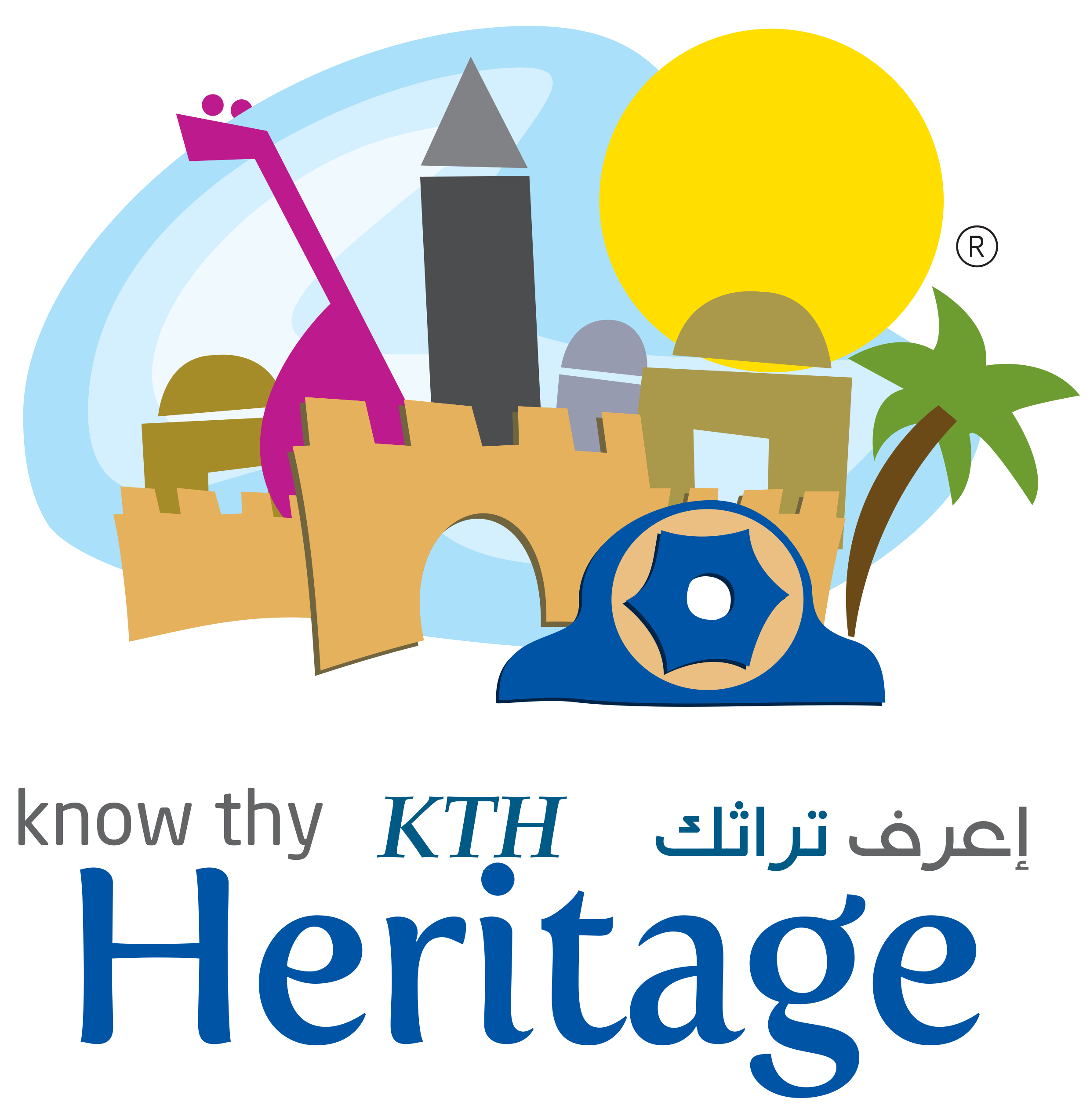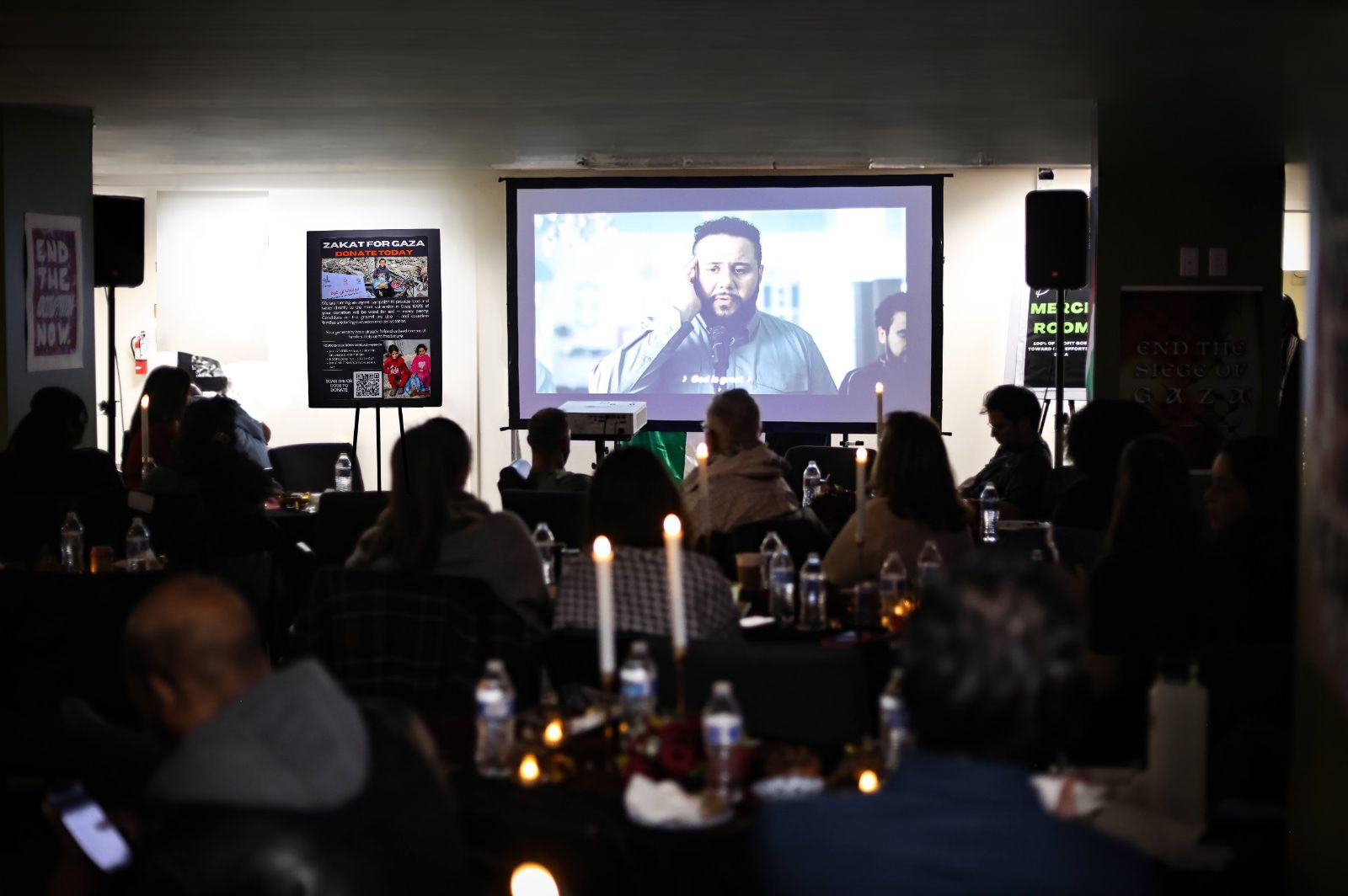Palestinian Diaspora return from home and ready to serve Palestine
Birzeit, Palestine – Know Thy Heritage (KTH) welcomed its 9th annual Delegation to Jordan on Thursday, July 11th. Each year a new delegation of Palestinian Diaspora travel from around the world to participate in Know Thy Heritage (KTH) Leadership program to “Explore and Serve Palestine.” This program helps the delegation get a real-life experience of their culture, history, traditions, learn their identity, and about Palestine’s economic, social, and political status.
The 2019 delegation was made up of delegates from four continents and five countries, coming from all different backgrounds to learn about the development of Palestine when it comes to their business, financing, law, medicine, communications, education, economy, and much more. The Know Thy Heritage (KTH) Leadership Program to “Explore and Serve Palestine,” brings Palestinian diaspora from around the world, for a two-week journey to come home and strengthen their knowledge on their culture, identity, history, traditions, and learn not only about the current struggles, but also how they as diaspora can help to reach the goal of getting Palestine back.
The Journey Home Begins Today : A Taste and a Step into Our Journey
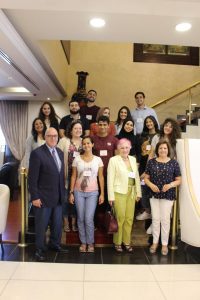 The Know Thy Heritage Delegates arrived Thursday, July 11 in Amman, Jordan. The group gathered for a dinner and meet and great with all the delegates, as well as others from past delegations. It was amazing meeting Palestinians from all over the world, from England to Australia, Panama to Chile, and the USA. The most exciting part was meeting and hearing about a delegate from KTH 2015 Mohammed, who brought a group of his students for a study abroad trip.
The Know Thy Heritage Delegates arrived Thursday, July 11 in Amman, Jordan. The group gathered for a dinner and meet and great with all the delegates, as well as others from past delegations. It was amazing meeting Palestinians from all over the world, from England to Australia, Panama to Chile, and the USA. The most exciting part was meeting and hearing about a delegate from KTH 2015 Mohammed, who brought a group of his students for a study abroad trip.
Orientation
Mr. Rateb Rabie, President/CEO of KTH, planned a day of important information and facts necessary to proceed on our journey to Palestine the following day. This information included what to do and what not to do when crossing the border, and how to carry ourselves despite the treatment we may encounter. We also had a guest speaker, Dr. Assad Abdul Rahman, Chairman of the Palestine International Institute, who enlightened us with many history lessons, ways for us to overcome the occupation, even though we have a long way to go.
Although we had a long day, we then went to Al Hanouneh and had a night filled with Palestinian culture, from the homemade traditional food, dabke dance, and amazing hospitality. It was such a great way to end the night, and the next day we were off on our Journey to Palestine.
The Waiting Room to Enter Palestine
 Today was the day that we begin our journey to the amazing and beautiful Palestine. Although we had a long day yesterday and an early morning, we were so excited and full of energy to see our homeland. On the way, we went over the talking points we discussed the day before in our orientation, making sure we were prepared for any surprises that may arise with Israeli security. Upon entering the border, the room was packed, lines were long, and we were questioned. Four hours of waiting later and we finally were able to leave and see Palestine for the first time.
Today was the day that we begin our journey to the amazing and beautiful Palestine. Although we had a long day yesterday and an early morning, we were so excited and full of energy to see our homeland. On the way, we went over the talking points we discussed the day before in our orientation, making sure we were prepared for any surprises that may arise with Israeli security. Upon entering the border, the room was packed, lines were long, and we were questioned. Four hours of waiting later and we finally were able to leave and see Palestine for the first time.
No matter our exhaustion and frustration with the difficulty we faced crossing over, we were beyond excited and ready to be home. We were pleasantly greeted with the amazing scenery, and we were in such awe with the beauty that the entire bus was silent.
We were welcomed by the Latin Patriarchate of Jerusalem and community with Palestinian flags and flowers, and headed to the municipality of Birzeit. We were honored to meet Birzeit’s Mayor Ibrahim Saed.
A Day of Immersion into Palestine: Yesterday, Today, and Tomorrow
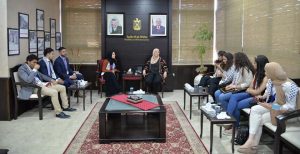 We woke up for the first time in Palestine, and after our stressful yet joyful day, we were beyond excited. What better way to start than with a traditional Palestinian breakfast. Off we went to the Birzeit Pharmaceutical Company to see how the Palestinians are making strides and working regardless of the difficulty they face under the occupation.
We woke up for the first time in Palestine, and after our stressful yet joyful day, we were beyond excited. What better way to start than with a traditional Palestinian breakfast. Off we went to the Birzeit Pharmaceutical Company to see how the Palestinians are making strides and working regardless of the difficulty they face under the occupation.
Following our tour, we headed to the Ministry of Foreign Affairs to meet with the Palestinian Authority and Ambassador Hanan Jarrar. Where we had a discussion on what is happening, and what they’re planning to do for the future of our country. Sir Rateb Rabie, KTH President, and Dr. Najat Arafat Khelil, Chair of KTH Board of Directors, had the opportunity to meet with the Minister of Foreign Affairs and Expats. After introducing the KTH program, it was decided to develop an official relationship by signing a memorandum of understanding (MOU).
Following our meeting, we headed to meet with Dr. Hanan Ashrawi, PLO executive committee member. We were so compelled by her discussion. On top of that, we were enlightened to hear of her interest in our program and how important the Palestinian Diaspora is. We headed to our last meeting of the day with Dr. Laila Ghannam, governor of Ramallah. She gave us the knowledge on what we can do to help the current state of Palestine.
Our day didn’t end there. We headed to the Yasser Arafat’s tomb and museum as well as had dabkeh lessons from the Smoud Folklore group.
Bethlehem Shows Palestinian Spirit of Resilience, Innovation, and Strength
 We started our day in Bethlehem with an instructive workshop at the Applied Research Institute, Jerusalem (ARIJ), where we learned about their 4 programs: sustainable agriculture, natural resource management program, urbanization monitoring department, and the good governance program. We learned of the projects and initiatives they’re putting forth to help Palestine.
We started our day in Bethlehem with an instructive workshop at the Applied Research Institute, Jerusalem (ARIJ), where we learned about their 4 programs: sustainable agriculture, natural resource management program, urbanization monitoring department, and the good governance program. We learned of the projects and initiatives they’re putting forth to help Palestine.
Following our workshop, we got to explore the beautiful city of Bethlehem with a tour that included Camp Aida, the occupation wall, and the Crimson Valley with the Society of St. Yves, and more.
We headed to Bethlehem University to meet with chancellor and a current student. Hearing the struggles not only the faculty face, but also the students attending with the current state being under the control of the Israelis was difficult. Although they are put through all these obstacles, they never give up and persevere in their education.
We finally headed to the Church of the Nativity, which such an honor and a pleasure to have been able to see one of the most important place for Christian religions. Seeing this church that has been standing through hundreds and hundreds of years, that marks the place where Jesus was born, and that houses Christians of various denominations—like Greek Orthodox and Roman Catholic was powerful.
“These visits were hard though important to witness, and provided real life, visual examples of what we had learned about earlier in the day. We felt the anger and frustration as we walked along the large wall that divides the city and the space that creates a refugee camp of our own Palestinian peoples. While the views from Crimson Valley were breathtaking, our awe was broken by rage as we learned of the settlements in the distance, the wall drawing cuts in our people’s land, dividing them from our resources, our capital of Jerusalem, our families.” – Bernardita Y.
A Day in the Old City of Jerusalem
 It is the sixth day of our trip and we began our journey to the Old City in Jerusalem. Once we made it through the checkpoint unscathed, excitement filled the bus. The feeling that came upon us when entering was unexplainable knowing the importance and beauty this city holds. The culture, infrastructure, and energy was absolutely amazing. We began our tour of Al Aqsa, and got the pleasure of being able to visit many restricted areas. For the Muslim delegates, it was an honor to have been able to pray in such a place that holds an immense significance in Islam.
It is the sixth day of our trip and we began our journey to the Old City in Jerusalem. Once we made it through the checkpoint unscathed, excitement filled the bus. The feeling that came upon us when entering was unexplainable knowing the importance and beauty this city holds. The culture, infrastructure, and energy was absolutely amazing. We began our tour of Al Aqsa, and got the pleasure of being able to visit many restricted areas. For the Muslim delegates, it was an honor to have been able to pray in such a place that holds an immense significance in Islam.
We then kept our tour going to The Church of The Holy Sepulchre. Our Christian members were able to experience the emotional ambience of Jesus Christ’s final resting place.
After our long journey, we got to experience the traditional Makloubeh meal at the Jerusalem Hotel. Following our meal, we had a discussion with journalist Maral Amin. She explained what it is to be Palestinian in Jerusalem, the struggles they face such as being labeled as Jordanian on passports, not being able to obtain citizenship, and their different I.D cards they must carry.
We then headed to the Notre Dame Center for a discussion on “Palestinians as a Model of Coexistence.” We got to hear straight from the Patriarch Michael Sabah, Archbishop Attalah Hanna, and Imam Yahya Hindi, representing the Greek Orthodox Church, the Catholic Church, and the Islamic faith.
“These religious leaders all projected the messages of acceptance and unity for peoples of all faiths in the face of discrimination in all its forms. It was an inspiring and a beautiful way to conclude our visit to the holiest place on earth.” – Sam O.
Ramallah and Jericho: Old Cities and New Business
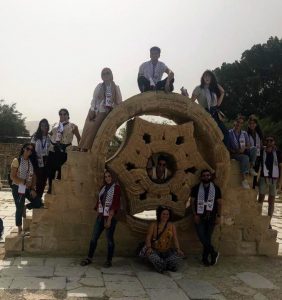 Our day started with a meeting with Dr. Ahmed Majdalani, the Minister of Social Development. He made it very clear how important it is for us to all come together, and how they work together in not only the community but as well as the city of Ramallah. Following our meeting, we headed to the Ramallah municipality, learning the struggles they face with the occupation concerning landfills among other important issues.
Our day started with a meeting with Dr. Ahmed Majdalani, the Minister of Social Development. He made it very clear how important it is for us to all come together, and how they work together in not only the community but as well as the city of Ramallah. Following our meeting, we headed to the Ramallah municipality, learning the struggles they face with the occupation concerning landfills among other important issues.
We then headed to meet with the deputy governor of Jericho. We discussed many important topics, including the lack of employment opportunities for educated youth, as well as the many resources being cut off for Palestinians by the occupation. We then met with the mayor of Jericho, which was very educational on the history of the city, the unemployment issues, but also a very tough pill to swallow hearing the heartbreaking stories of his experience’s. This meeting left us speechless.
As our journey continued, we headed to the ruins of Hisham Palace. We ended our day with the Rosana Festival in Birzet, which was cultured-filled, and we got to witness a traditional Palestinian wedding ceremony.
“We as Palestinians are resilient and made to survive.” – Faris E
Hebron, Palestine’s Biggest City, Holds Visible Demonstrations of the Struggle
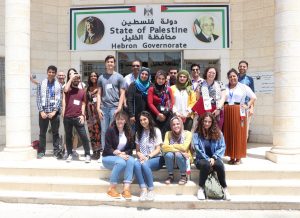 Our day began with an amazing tour of the ceramic and glass blowing factory. The amount of work, precision, and talent that goes into each and every piece was breathtaking.
Our day began with an amazing tour of the ceramic and glass blowing factory. The amount of work, precision, and talent that goes into each and every piece was breathtaking.
We were then taken to the Aljibrini yogurt factory by Leena Hammoureh, our tour guide of the day. Yet again, we saw how Palestinians fight to help grow the economy and work to do what they can for their country despite the struggles they are facing.
Leena continued our tour, which turned out to be one of the hardest to see and hear as this city has the occupation within its very own walls. Seeing the complete streets shut down, hearing the stories of the Palestinians, and the trash filled-alleys due to the Israel occupation was heart wrenching. Although the city was beautiful and the Palestinians filling it were delightful, it was heartbreaking hearing the struggles they face and the treatment they are given by the Israelis.
Leena kept the tour going as we headed to the Ibrahimi Mosque, where there was a checkpoint we had to go through to get to the Mosque, which felt as if we were being herded like cattle going through the metal gates. This was the least of the heartbreaking facts, seeing the giant cameras impeding our privacy in the holy place of prayer.
“One man we met had a wife and child, and his pregnant wife was killed when she went out onto the roof of her home and was shot. Her unborn child managed to survive, but at the age of 5, was blinded when Israelis dropped acid on his face. He now deals with medical bills and limited access to economic growth because of the way Israeli settlers set up bureaucratic systems that limit Palestinians’ ability to prosper. While we cannot immediately change his circumstances, we were happy to be welcomed to his home and to buy some of the beautiful products they make to make a living”. – Bernardita Y.
Nablus, a City Full of History and Traditional Flavors
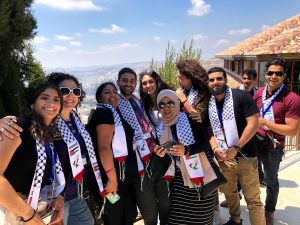 Although our journey in Palestine was coming to an end, we were still filled with joy and ready for our next adventure. Upon arriving at the Municipality of Nablus, we were so warmly welcomed. We learned about the history of the Balata, as well as seeing and drinking from Jacob’s Well.
Although our journey in Palestine was coming to an end, we were still filled with joy and ready for our next adventure. Upon arriving at the Municipality of Nablus, we were so warmly welcomed. We learned about the history of the Balata, as well as seeing and drinking from Jacob’s Well.
Following our informative meeting, we went to the Al Arz Ice Cream Factory to see how Palestine’s most famous ice cream brand manufactures its products. The fun did not stop there as we then went to the Al Ard Olive Oil Factory. We learned the history, saw the production, and were given samples to take home. Although the occupation puts a huge strain on Palestinians, they are doing their best to keep not only the farmers and factory workers employed, but to keep aiding the Palestinian economy.
After seeing the many factories, we were blessed to have been invited to Munib Musri’s house called Beit Falasteen, or the House of Palestine, on the mountain of Mercy. The amount of history and beauty this house holds are beyond imagination. The ruins of an ancient church were discovered when the building of the house began, which have been completely preserved. In this beautiful palace, we felt as if we were having a family dinner; the hospitality of Palestinians is like no other.
We finished our tour of Nablus on a sweet note having Palestine’s signature dessert Knafeh. Not only that, but we also got to see and learn about the famous Saboon Nablusia or the Soap of Nablus. We visited the factory where it is made, to see how they do it, and we were able to buy it fresh.
Palestinian Diaspora in Historic Palestine: Our Visit to Iqrit, Acre, & Haifa
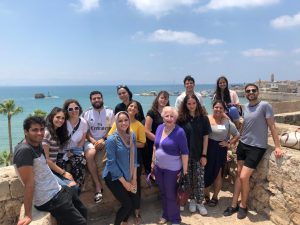 Today was the earliest start we had as we headed north to meet with Shadia Sbait, where we would learn about her destroyed village of Iqrit. After our journey up the steep hill, the beautiful village that once was, heart break took over as we saw the only thing that was left was the church and cemetery. The people of this beautiful village were told to leave for only a two-week period, which turned into 71 years of not being able to return to their homes that were ultimately destroyed by the Israelis.
Today was the earliest start we had as we headed north to meet with Shadia Sbait, where we would learn about her destroyed village of Iqrit. After our journey up the steep hill, the beautiful village that once was, heart break took over as we saw the only thing that was left was the church and cemetery. The people of this beautiful village were told to leave for only a two-week period, which turned into 71 years of not being able to return to their homes that were ultimately destroyed by the Israelis.
Following such a heart filled tour and story of Iqrit, we headed to Akka. Being here gave us perspective of the Israeli state and occupation. We had a local tour guide ZamZam Faour who explained that while the Palestinians coexist with the Israelis, they have many limitations on their rights and resources.
We were then in Haifa, and saw the beautiful Baha’i Shrine and Gardens. Following this, we went to meet with the director of Mossawa, Jafar Farah. The discussion we had with him was one that made all of us stop and think differently about the bigger picture in our current state of occupation. He made very clear how important our job as Palestinian Diaspora is.
“The people of Iqrit, however, demonstrate the resiliency of the Palestinian spirit. While they have not been able to return, and rebuild, they continue to come back to the church, performing ceremonies and weddings in that church, the only part of the village the Israelis could not destroy. Using the Israeli legal systems, the people of Iqrit were able to make Israelis open the road to and bring electricity back to this destroyed village”. – Bernardita Y.
Our Visit to Nazareth and Yaffa
 Waking up in Nazareth was a nice change for us, and after a nice breakfast we began our exploring. Our first stop was seeing the Annunciation Church, which is built on top of Mary’s home. We were humbled to see and be in such a beautiful place, ancient city, and hear the history and stories. Seeing the old and new churches it showed us the Palestinian resilience and how we will overcome everything. Following this we went to see the White Mosque which was absolutely beautiful. Only showing us more so that we have been coexisting for so long.
Waking up in Nazareth was a nice change for us, and after a nice breakfast we began our exploring. Our first stop was seeing the Annunciation Church, which is built on top of Mary’s home. We were humbled to see and be in such a beautiful place, ancient city, and hear the history and stories. Seeing the old and new churches it showed us the Palestinian resilience and how we will overcome everything. Following this we went to see the White Mosque which was absolutely beautiful. Only showing us more so that we have been coexisting for so long.
Next was our drive to Jaffa, enjoying the beautiful summer weather, seeing the Mediterranean coastline. Although it was very obvious the differences from the West Bank, it had its own beauty. On top of the beautiful scenery was the happiness and excitement for being able to relax a little at the beach.
Our amazing day was coming to an end as we headed back to Birzet. We were pleasantly greeted when we arrived to such a traditional dinner of Stuffed vine leaves (Warak Eenab), zucchini (cusa) and stuffed eggplant (batinjaan) making us feel as if we were home. Reality finally hit us that tomorrow was the last day of our two-week journey.
https://kthps.org/our-visit-to-nazareth-and-yaffa/
Final Day: Our Last Supper
 Time had flown by as today was our last and final day in our beautiful homeland, with the amazing people and culture. This is a trip that changes you in many ways, open your eyes, and your mind. We began our evaluations on the trip to see if any improvements who could be made for the next group. Today was the day for us to discuss what we can each do to help, and promised in our initial essays before embarking on our trip. After seeing what we saw, and experiencing what we did we were more than motivated to do our part.
Time had flown by as today was our last and final day in our beautiful homeland, with the amazing people and culture. This is a trip that changes you in many ways, open your eyes, and your mind. We began our evaluations on the trip to see if any improvements who could be made for the next group. Today was the day for us to discuss what we can each do to help, and promised in our initial essays before embarking on our trip. After seeing what we saw, and experiencing what we did we were more than motivated to do our part.
We had our last home cooked meal of fish and chips, before we began our last journey to the Dead Sea. The Dead sea is something like no other, the beauty is indescribable, and floating on the water is such an experience. Although it was tough to see the illegal Israeli outpost set in place, and how most of the open Dead sea was ultimately closed off to us.
Now our last night has come, and we headed back to Ramallah for our final ceremony. The amount of work, and the many working parts that goes into the trip is incredible. We had so many thanks to give, and could not have been more grateful to have been given this life changing opportunity. Although we were leaving tomorrow, we will never forget, and we will be back. Inshallah, we will have our beautiful Palestine back.
“To call KTH an emotional rollercoaster is an understatement – the program was dense with experience and in the last few weeks many of us may have aged years. Though we are leaving we are never gone; though not under our feet, Palestine is in our hearts”. – Faris E.
